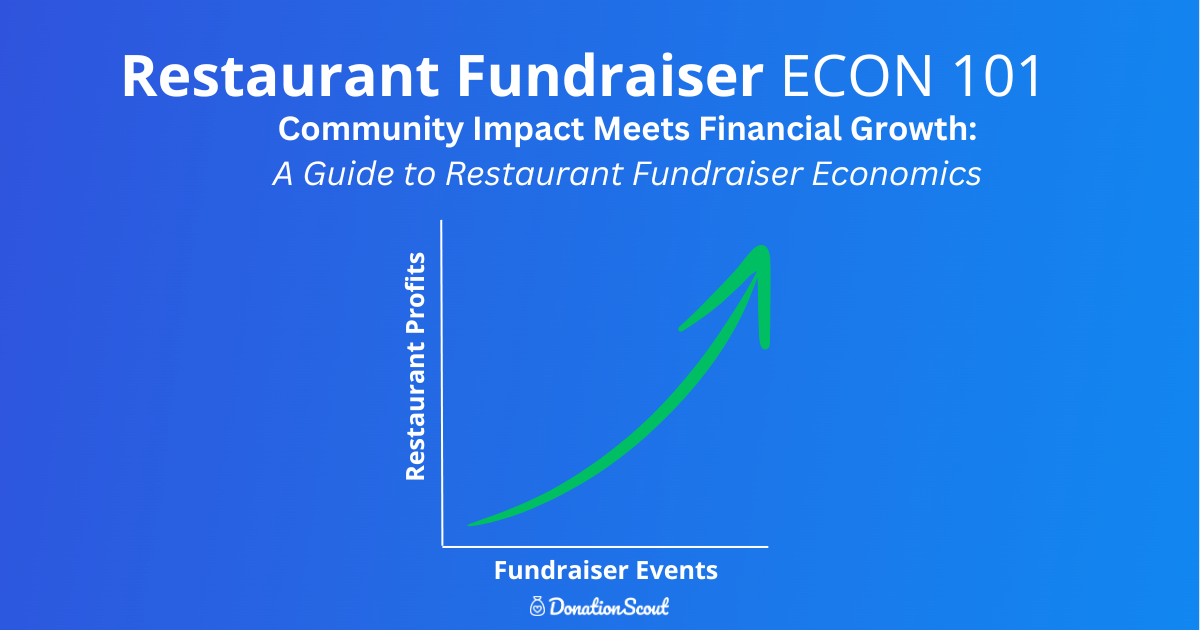
Restaurant Fundraiser ECON 101: Community Impact Meets Financial Growth
Restaurant Fundraiser ECON 101: Community Impact Meets Financial Growth
A Guide to Restaurant Fundraiser Economics
Welcome to our comprehensive guide on the economics of restaurant fundraisers, where community impact meets financial growth. In this blog post, we will break down key concepts essential for understanding the financial dynamics behind successful fundraising events.
Many restaurant operators mistakenly believe that community fundraiser events (AKA Spirit Nights, Dine and Donates, etc.) are not economical. This misconception arises from the practice of subtracting the donation % from unit-level EBITDA (e.g., EBITDA of 15% - a 20% donation), rather than using the flow-through P&L to assess profitability. As a result, they often adopt an accommodative approach to fundraisers, missing out on potential revenue opportunities. This blog post aims to educate restaurant professionals on the correct way to evaluate the true profitability of their fundraiser programs. By understanding key concepts such as flow-through, incrementality, and cannibalization, restaurant operators can justifiably transition to a proactive approach, maximizing both community impact and financial growth.
Flow-through is the percentage of additional (marginal) revenue that translates into profit. When restaurants host fundraiser nights, the goal is to generate incremental sales, and the vast majority do. The exception would be a general fundraiser such as Jersey Mike's Day of Giving where they generously donate a portion of ALL sales. The flow-through percentage helps in determining how much of this incremental revenue will actually contribute to profits after covering the variable costs.
Incrementality in this case refers to the portion of sales that would not have occurred without the fundraiser event. This metric is crucial for evaluating the true impact of the event on profitability. This amount of incremental sales can vary from restaurant to restaurant and depends on a number of factors such as brand awareness (i.e., is this a new restaurant/brand or a staple), typical customer frequency, and competition. Based on reports from DonationScout restaurant partners, incremental sales percentages are generally in the 75-90% range making fundraisers a great way to bring in brand new or lapsed customers.
Cannibalization is effectively the inverse of incrementality. It measures the degree to which fundraiser events attract or convert existing customers instead of new ones. High cannibalization rates indicate that the event is not bringing in additional sales but merely shifting the timing or nature of existing customer purchases. Restaurants can minimize cannibalization by limiting the frequency of events per organization. Once per quarter is generally a good rule of thumb.
Additionally, properly communicated event rules and restrictions are also a must. Here are a few examples.
- No event marketing on premises during the event.
- Customers must show the event flyer or post at check out.
- A minimum sales threshold (so the organization knows the onus is on them to promote the event to their members well in advance.)
Here’s how the math works…
To illustrate these concepts, let's look at a unit-level profit and loss (P&L) example for a typical fundraising event:
This example highlights how incremental sales are distributed across various cost components and ultimately contribute to event profit. Different from a typical unit-level P&L that includes large fixed costs such as occupancy and utilities, flow-through (adjusted for incrementality/cannibalization) accurately illustrates the profitability of these community marketing events.
This illustration also speaks to the importance of incrementality. Since the donation % is calculated on total sales vs. incremental sales, It's important that your restaurants are targeting fundraising orgs that do a good job of promoting their own events.
Beyond the direct profitability, fundraiser events offer numerous indirect financial benefits that significantly enhance a restaurant's overall performance. These events not only see increase spending per guest during the event but also attract new customers who might not have otherwise visited. Additionally, fundraiser events encourage customers (new and existing) to return more frequently, thus increasing their lifetime value. See the Primanti Bros Case Study HERE for more on these indirect benefits.
Furthermore, fundraiser events present lucrative opportunities for catering sales, as satisfied fundraiser attendees often consider the restaurant for future catering needs. Integrating fundraising and catering efforts is a unique tactic for restaurants to not only increase their sales but also build lasting relationships within the community. This strategic approach not only fuels business growth but also fosters a positive social impact, creating a win-win scenario for all involved.
Conclusion
Understanding and accurately assessing the true profitability of community fundraiser events is essential for restaurant operators. Moving beyond the misconception that these events are not economical, operators can adopt a proactive approach that maximizes revenue opportunities and fosters strong community ties. Seldom do businesses have an opportunity to do something good while also directly benefiting their bottom line; fundraiser events present this unique opportunity to achieve both.
For more information on how DonationScout can support your restaurant's fundraising efforts, visit our website or contact us directly at hello@donationscout.com.
